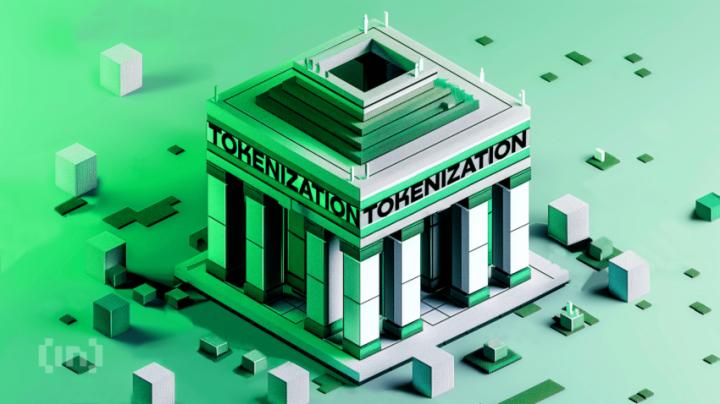Markus Infanger has witnessed various financial changes with over 30 years of experience in the global financial sector.
However, his recent chapter clearly shows how blockchain and tokenization will redefine the future of money by leading Ripple's institutional DeFi efforts.

From Trading Desk to Innovative Technology... The Reason for Focusing on Blockchain
Markus Infanger's entry into cryptocurrency was not immediate. "My journey into the crypto world began during one of the major upward cycles in 2017," he explained.
At the time, he was deeply involved in the foreign exchange market and monitoring fiat currency movements. This exposure sparked his interest in the emerging digital asset space.
Initially, he believed that it would take decades for blockchain to be integrated into the financial system, but a decisive moment changed his perspective.
"A headhunter approached me to discuss Ripple," he recalled. "The shift in focus was surprising. At exchanges, the goal was always maximizing profits. At Ripple, the goal was to reimagine global payment infrastructure."
This fundamental change in purpose convinced him to join Ripple six and a half years ago.
"It was a moment of realization. I realized that in traditional finance, we never questioned the broader purpose of our work."
Why Institutions Are Quickly Adopting Tokenization
According to Ripple's recent report with BCG, they predicted that institutional tokenization could reach $18.9 trillion by 2033. Infanger explains this momentum is due to several converging trends.
"Blockchain has passed the early adopter stage," he said. "We are now in the early majority stage and are being recognized as the foundational technology for financial modernization."
He sees tokenization as a bridge connecting existing assets with blockchain systems. Existing infrastructure, much of which was built before the internet, is highly inefficient. Payments take days, costs are inconsistent, and issuance is slow. Tokenization offers a streamlined and cost-efficient alternative.
For financial institutions, there is an opportunity to transform cost centers into strategic advantages.
"Operational inefficiencies are a significant burden," Infanger said. "Blockchain helps reduce friction and lower costs. BlackRock's entry into this field last year was a turning point. It validated institutional use cases."
Real Estate Tokenization, Overcoming Bureaucratic Gridlock
Initially, money market products were expected to lead tokenization, but real estate has begun to take center stage.
However, this sector faced notorious challenges due to manual processes involving notaries, registries, and local authorities. Ripple has made progress in this area.
"The game-changer was the partnership with Ctrl Alt and the Dubai Land Department," Infanger said. "We enabled DLD to issue ownership certificates directly on the XRP Ledger. This is the first in the industry."
This change allows UAE residents to access blockchain-based ownership certificates at a lower cost. However, regulatory harmonization remains an obstacle.
"The game-changer was the partnership with Ctrl Alt and the Dubai Land Department," Infanger said. "We enabled DLD to issue ownership certificates directly on the XRP Ledger. This is the first in the industry."
What's Next for Tokenized Assets?
Going forward, Infanger anticipates continued growth across several asset classes. "Stablecoins are leading the way. They are essentially tokenized currencies, and their role in payments is rapidly expanding," he said.
Ripple's own stablecoin RLUSD, launched late last year, has already garnered attention. Beyond payments, tokenized money market products and high-quality liquid assets are gaining importance in collateral management and financial operations.
"These tools enable intraday profit generation and credit risk reduction, providing significant operational value," Infanger added. He also mentioned the remarkable pace of real estate tokenization shown by the Dubai Land Department initiative and sees increasing interest in tokenized private credit and equity.
I made this video back in January about "The Tokenization of Everything".
— 7SEES (@7SEES_) July 22, 2025
Larry Fink loves Bitcoin.
Goldman Sachs & PNC love Coinbase.
Ripple is Brad Garlinghouse (Ancestry, AOL, Silver Lake Partners, Yahoo) and Chris Larsen (created E-Loans and Online FICO Credit Scores, is… https://t.co/4BFtnNiHto pic.twitter.com/vjbHbpCjHR
Expanding DeFi Through EVM Integration
Ripple's development indicates a broader move into the DeFi space through EVM-compatible sidechains and partnerships with entities like Wormhole.
However, Infanger clearly stated that this is an expansion, not a pivot. "We believe the future is multi-chain. The XRP Ledger is already part of that ecosystem, and EVM sidechain integration increases programmability and interoperability," he said.
He emphasized the importance of embracing both permissioned and permissionless environments, especially as regulated finance and DeFi begin to converge.
"We expect increased interaction between distributed and regulatory systems through technologies like zero-knowledge proofs."
Builder, AI... XRP Ledger's Future in DeFi
When asked what excites him in the XRP ecosystem, Infanger emphasized the emerging possibilities on the EVM sidechain.
"This opens the door to more expressive and sophisticated DeFi applications," he said. "We are especially looking forward to seeing how developers will utilize this."
He also mentioned increasing interest in AI integration.
"The intersection of AI and finance, especially payments, is heating up. AI has the potential to enhance how the XRP Ledger is used and the development of the broader ecosystem."
Ripple and Guggenheim Partnership's Key Reasons
The collaboration between Ripple and Guggenheim Partners marks a turning point in institutional adoption.
"Guggenheim is one of the largest issuers of commercial paper," Infanger said. "Through the XRP Ledger, they can issue these tools more efficiently and improve processes like pre-funding and trade finance."
This partnership reflects that blockchain is not just a speculative technology but a tool for solving real financial problems.
"The impact on stablecoin payments and collateral management is significant. Such collaborations help modernize infrastructure and demonstrate blockchain's institutional utility."
🚨 Big news!
— John Squire (@TheCryptoSquire) June 10, 2025
Guggenheim, a major U.S. investment firm, is partnering with Ripple to bring its digital debt product to the $XRP Ledger. 🇺🇸💰
Financial tokenization is accelerating! #XRP #Ripple #Guggenheim pic.twitter.com/HsU11loUwv
Public Blockchain vs Private... Why Openness Matters
Amid the ongoing debate between public and private blockchains, Infanger is a staunch supporter of the former.
"Public blockchains like the XRP Ledger provide unparalleled advantages in transparency, immutability, and security."
He drew parallels with the early days of the internet. "The internet's openness enabled massive innovation. Public blockchains will have the same impact on the financial system."
However, Infanger acknowledged that private blockchains are suitable for early-stage pilots or when additional control is needed for sensitive data.
But for scalable and trustless infrastructure, he believes public chains will have the greatest impact.
Overall, Marcus Infanger's perspective reflects the steady maturation of blockchain in institutional finance. From real-world use cases like tokenized ownership certificates in Dubai to new financial tools built on public ledgers, Ripple continues to play a central role in driving meaningful adoption.




